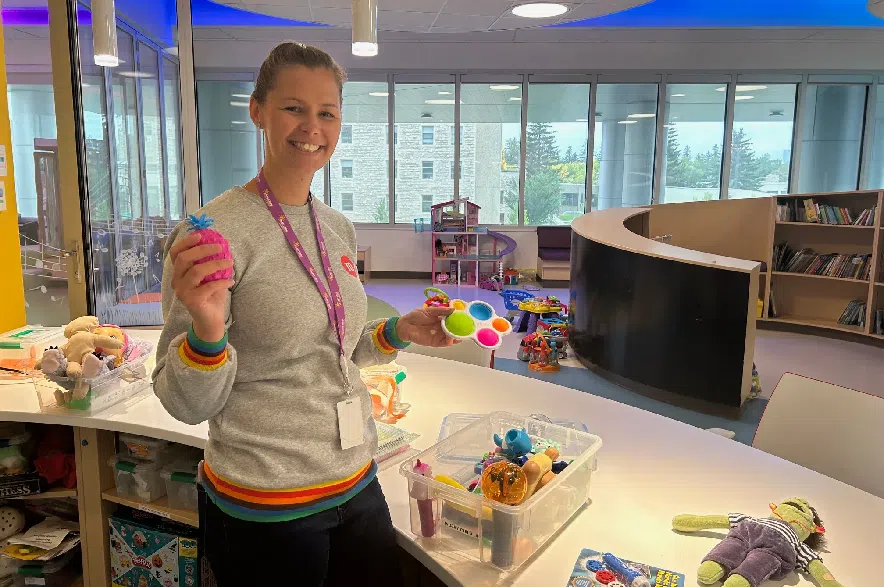As you walk through the halls of Saskatoon’s Jim Pattison Children’s Hospital, you’re met with many sounds that define the hospital experience.
The rhythmic beeping of monitors, the soft clatter of medication and food trays being wheeled from room to room, and the resonant echoes of the paging system create a familiar soundtrack for anyone who has spent time within these walls.
But deep within the hospital, you’ll discover a different atmosphere — one where the clinical sounds fade into the background, replaced by the joyful laughter of children.
“No medical treatments happen in here,” Dominique Rust explained as she toured 650 CKOM through the Child Life Zone. “There’s no oxygen. There’s no suction. This will never be bed space.”
Rust, manager of the JPCH’s Child Life program, smiled softly as she continued.
“It’s a safe space. The patient knows that when they are coming in here, they’re coming here to be a kid and be themselves. And that’s really important.”
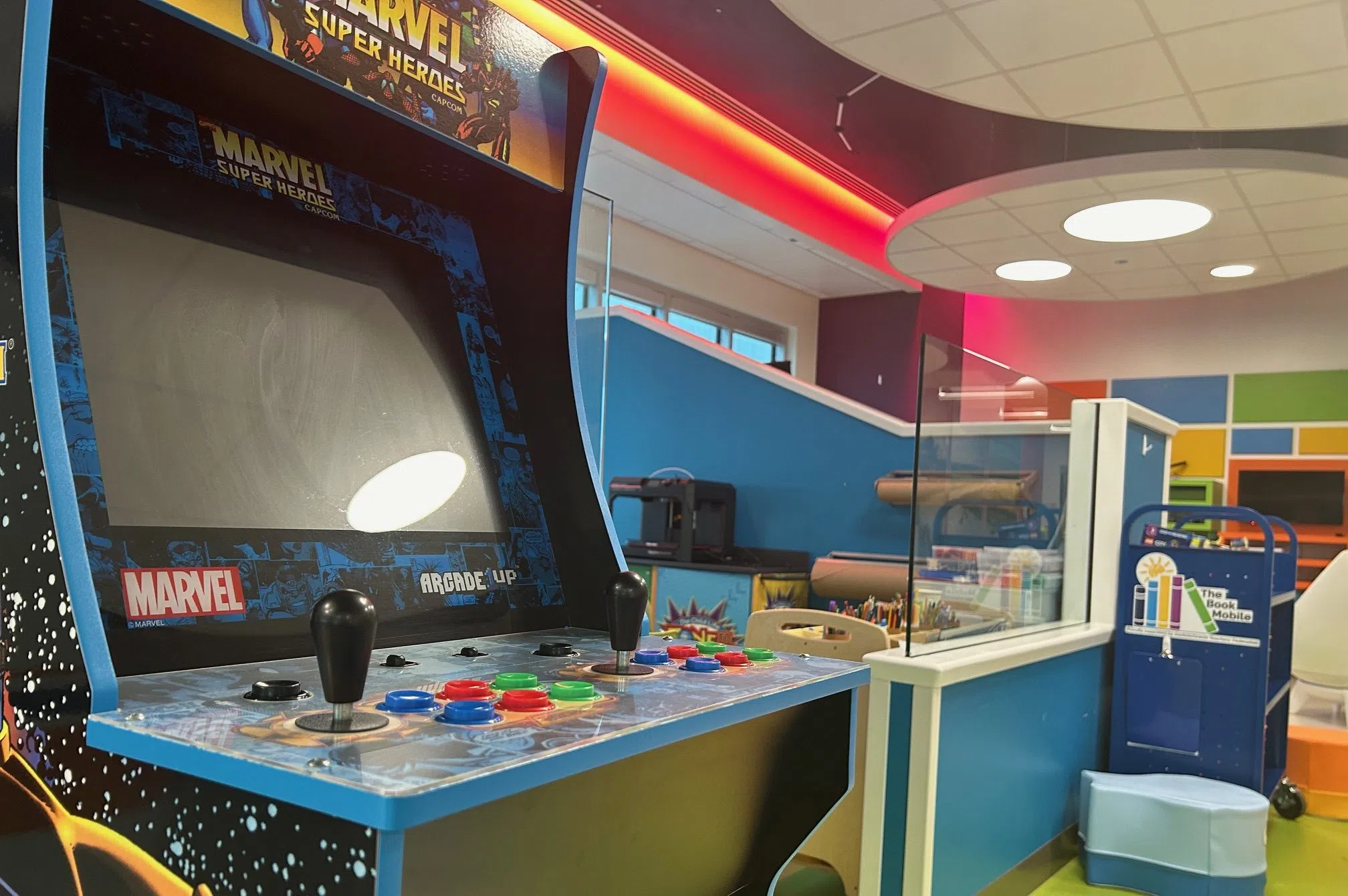
The Child Life Zone offers patients a much-needed retreat from the hospital atmosphere. The space includes items that appeal to kids of all ages. (Brittany Caffet/650 CKOM)
What is the Child Life program?
Rust and her co-workers may spend their days surrounded by toys, books and art supplies, but it’s not all fun and games. The Child Life program consists of child life therapists, recreation therapists and a music therapist who use play as a tool to help patients navigate their medical challenges.
“Children experience things pretty big. They have big emotions,” Rust said. “Depending on their age and their development, they’re easily scared, and the hospital is not a normal place to be. We work with these children from a developmental level, figure out what their interests are, how they understand things and provide opportunities to learn and cope.”
The Child Life team also educates young patients about the conditions they are diagnosed with, using age-appropriate language and methods to help the child understand what is going on in their body.
“We use pictures and stories,” she explained, adding that it often takes extra time and care to help their patients wrap their minds around these concepts. “We work with children. They’re not little adults; they’re children, so it’s just a different lens.”
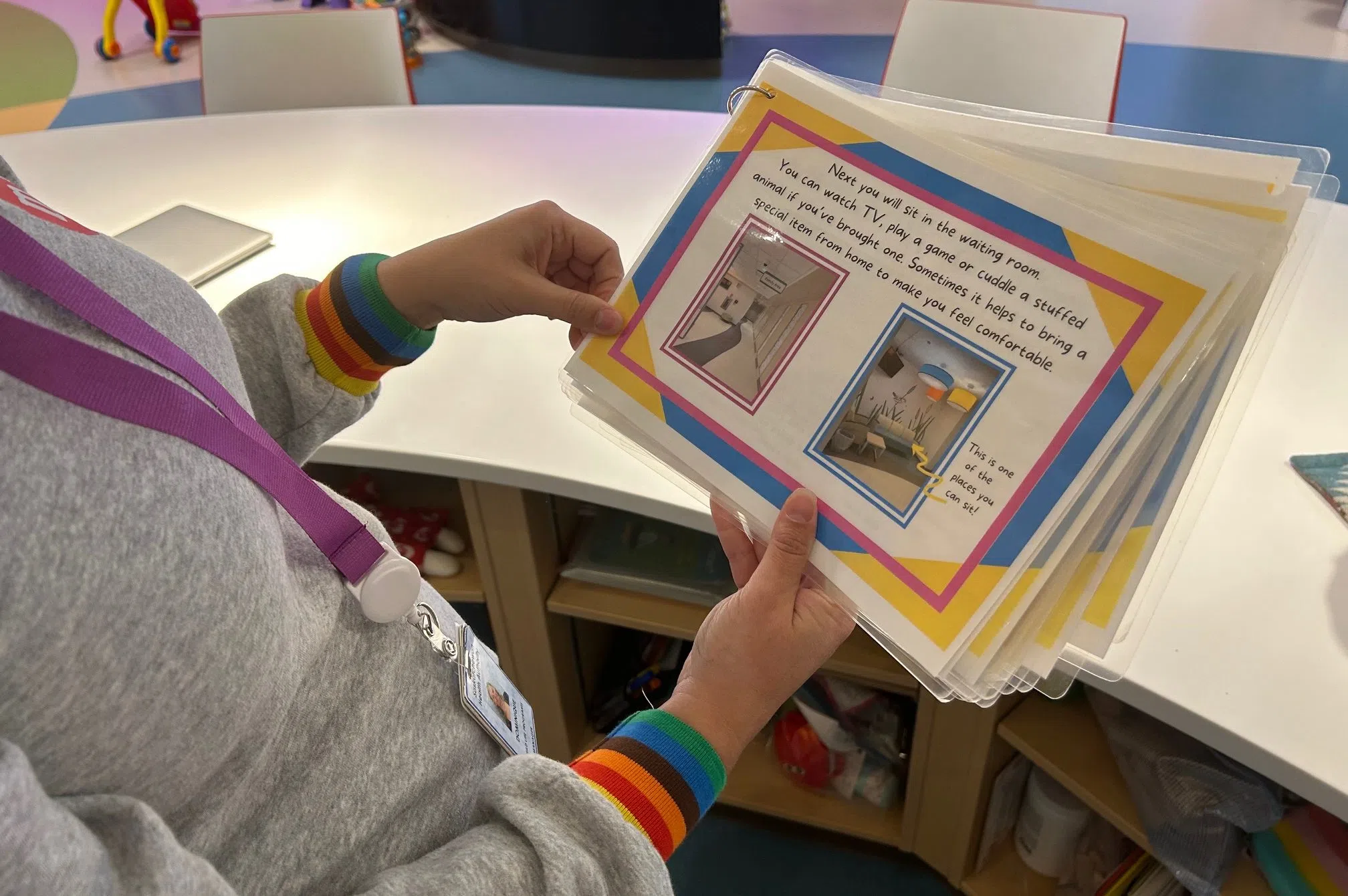
The Child Life Program often uses social stories — short, simple narratives that include photos — to prepare a child for a hospital experience, such as getting an IV or undergoing a procedure. (Brittany Caffet/650 CKOM)
Whether a child is in the emergency room, having surgery or admitted for a long-term stay, Rust’s team empowers children to share their wants and needs when it comes to treatments and procedures.
“We really want children to become part of their health-care experience and part of the treatment plan,” Rust said. “Oftentimes you have a provider come in, they talk with mom… and that’s it. We want to make sure the child has an opportunity to say ‘I don’t want to watch when I get a poke,’ or ‘I want to sit with mom.’ We give them options and an opportunity to become part of their treatment plan.”
While the program staff works with patients in every area of the children’s hospital, bringing toys and games with them into patient rooms, a large portion of their work takes place in the Child Life Zone.

The Child Life Zone was created through a partnership between Garth Brooks’ Teammates for Kids Foundation and the Jim Pattison Children’s Hospital Foundation. (Brittany Caffet/650 CKOM)
Exploring the Child Life Zone
Built in 2019, the JPCH’s Child Life Zone is the first of its kind in Canada. The space was created through a partnership between Garth Brooks’ Teammates for Kids Foundation and Jim Pattison Children’s Hospital Foundation.
The special area offers patients a much-needed retreat from the hospital atmosphere, allowing them to relax, play and simply be kids again.
“It’s not just a play space — it’s really important for their development to motivate them to get up and out of bed,” Rust explained. “We have video games, we have art, we have a 3D printer, we have books, toys, Lego…. whatever a kid needs!”
The Child Life Zone includes a gaming zone, art therapy studio, reading corner, music room, a full kitchen and a play ambulance, complete with flashing lights and working sirens.

The Child Life Zone’s play ambulance provides an opportunity for patients to get their hands on real medical equipment and supplies. Exploring these items through play can make them less intimidating to children during appointments or procedures. (Brittany Caffet/650 CKOM)
The kitchen space offers patients a warm haven for family bonding, creating precious moments that are often elusive in the sterile atmosphere of a hospital.
Rust recalled one recent interaction that demonstrated the importance of this space.
“We had a family new to Canada, and they were going through a hard time. They were admitted, and they just missed being at home,” she said.
“They gave us a grocery list, we got what they wanted and they just made dinner. Mom was so happy that she could just sit with her son and have a meal that she would have cooked at home, but here at the hospital. It was pretty special.”
READ MORE:
- New pediatric specialist welcomed to Jim Pattison Children’s Hospital
- 12-year-old girl named ambassador for Jim Pattison Children’s Hospital
- 5 million adults without primary care, surgeries returning to normal: CIHI
Throughout the space, you’ll find education kits that the Child Life team use to teach patients and caregivers about different procedures. From pill swallowing to bandage changes to IV starts, they have kits on hand to demystify every medical challenge a family could face.
“We’ll go through all the different steps of what they’re going to see, what they’re going to feel,” Rust explained. “We’ll talk about some of those worries that they might have and come up with a plan to help them cope.”
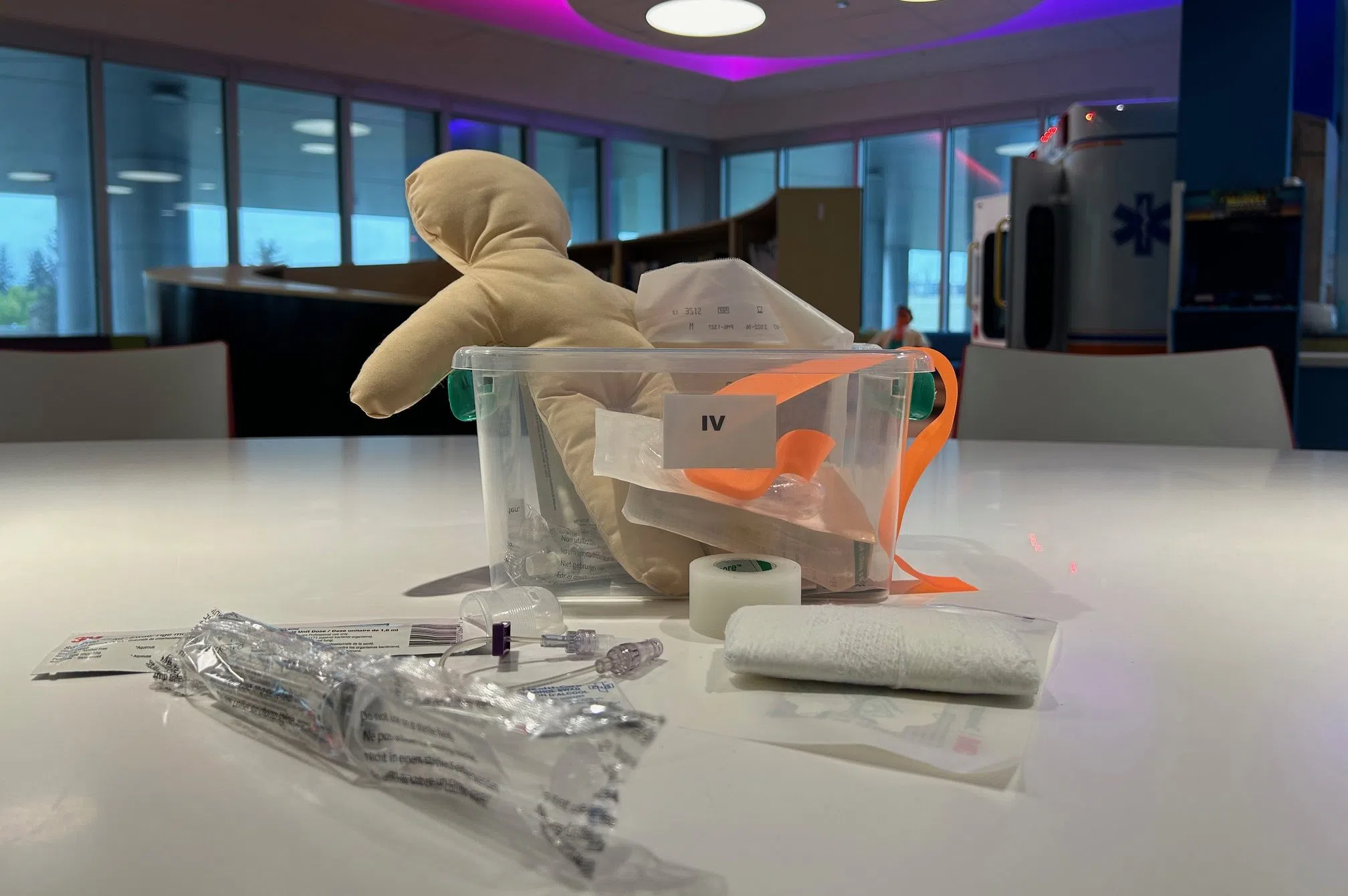
The Child Life team uses education kits to teach patients and caregivers about different procedures. From pill swallowing to bandage changes to IV starts, they have a kit on hand to demystify every medical challenge a family could face. (Brittany Caffet/650 CKOM)
The space is even equipped with a play MRI machine, allowing children to familiarize themselves with the equipment in a less-stressful environment.
“We have virtual reality goggles that show the whole MRI suite, so they can see it,” Rust said. “It will tell you if you’re moving. So you can practice in real time, but if you shift a little bit it’s like ‘Hold still like a statue!’ They learn what that means and then practice going in and out.”
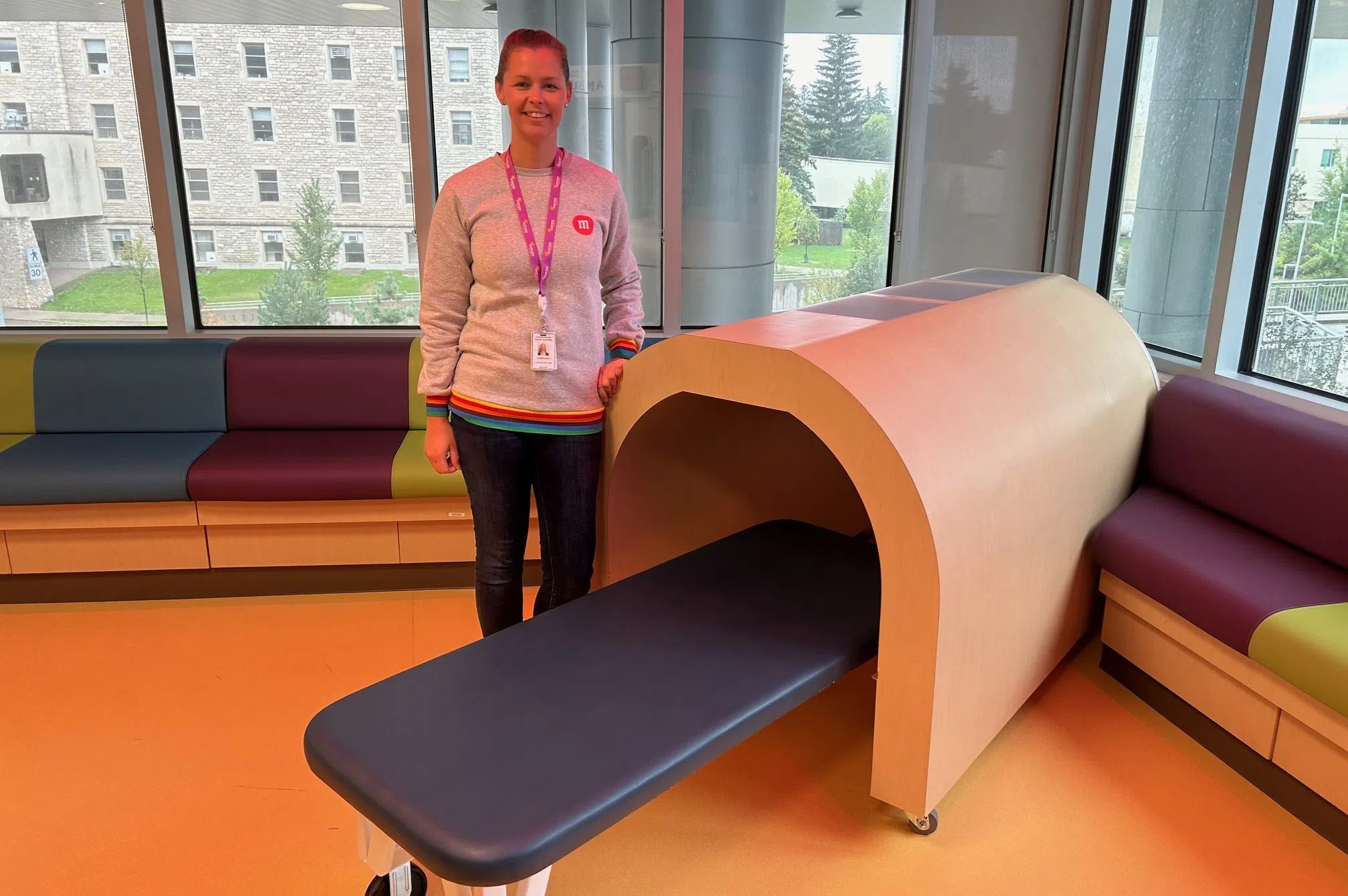
The space is home to a play MRI machine, allowing children to familiarize themselves with the equipment without stepping foot outside of the Zone. Virtual reality goggles are used to create a realistic experience. (Brittany Caffet/650 CKOM)
While an onlooker may perceive the items available in the Child Life Zone simply as toys, Rust said they are crucial tools that help reduce stress and anxiety in children during procedures.
“The more that they can understand what they are going to see, feel, touch, hear or even taste helps prepare them,” she explained. “So when that experience comes along, they’re like, ‘I know that, I know that this is next and I’m supposed to do this, this is my job now.’ It just helps the procedure go better.”
Hospitalizations can be traumatic for children and their caregivers, but the Child Life Zone provides a safe haven where kids can escape the stress of their medical surroundings.
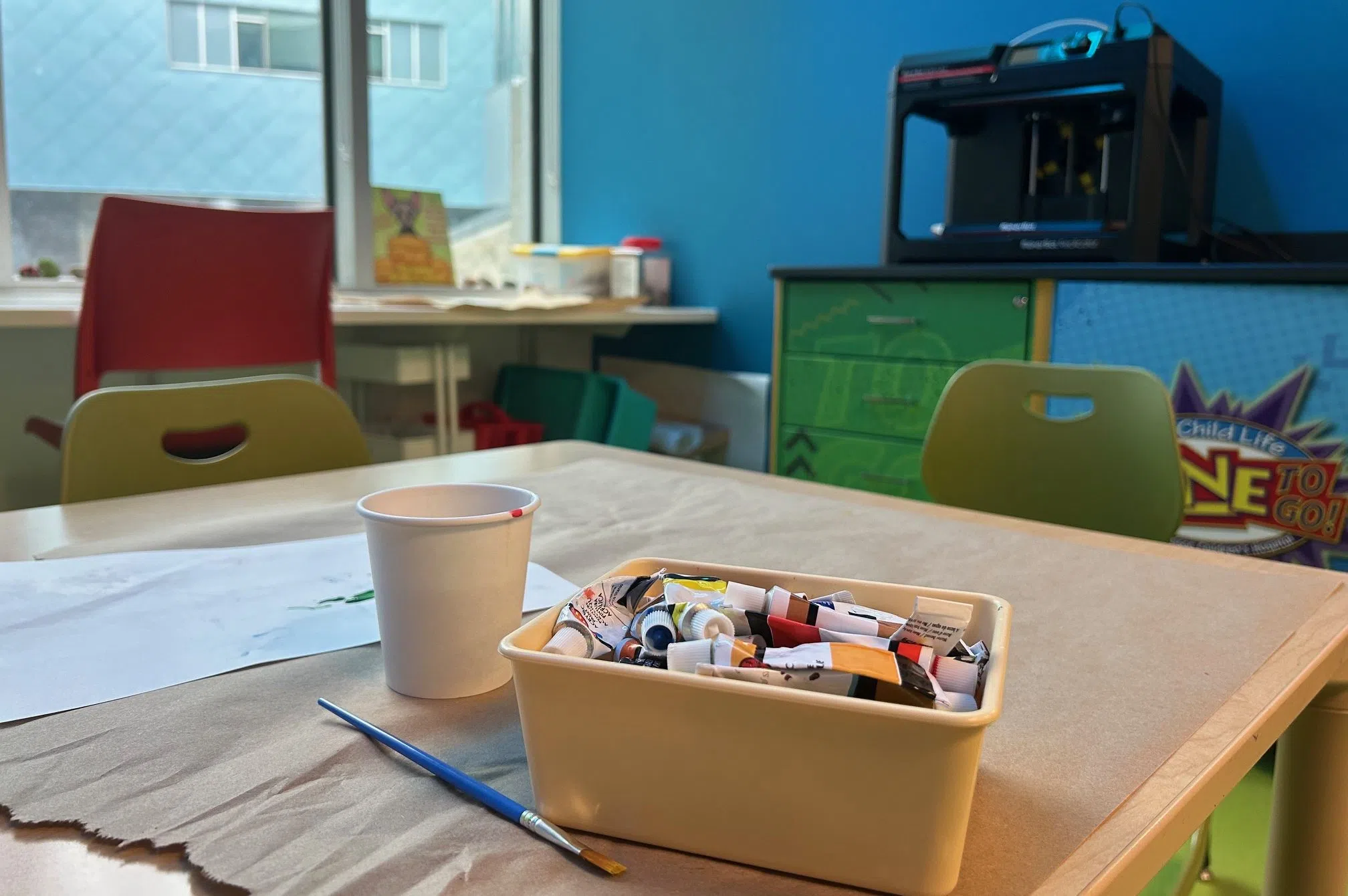
The Child Life Zone includes an art therapy studio, gaming zone, reading corner, music room, a full kitchen and a play ambulance. (Brittany Caffet/650 CKOM)
Surrounded by toys, art supplies, and the laughter of peers, they find a space to play, learn, and heal.
“We’re going to do whatever we can to make this experience as positive as possible,” Rust said, gazing around the bright, welcoming space that has become a refuge for the children who find themselves within these hospital walls.
“I think we’re making a pretty big impact.”
